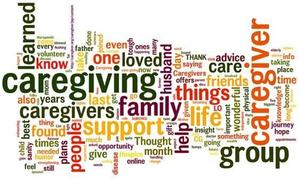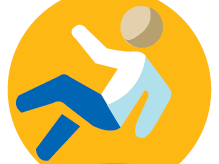Nuance Audio is a new option for people who resist traditional aids, from the company that makes Ray-Bans and operates LensCrafters.
Seekers of Meaning Podcast Posted Online March 7, 2025
What's Next Longevity Deal Talk Episode 32, January, 2025
Presentation: What's Next Longevity Venture Summit, June, 2025

 And in other news, CMS really wants older adults with dementia to remain in their homes. The government agency seems to have given up on improving the quality or affordability of dementia care in senior living or nursing homes. The new
And in other news, CMS really wants older adults with dementia to remain in their homes. The government agency seems to have given up on improving the quality or affordability of dementia care in senior living or nursing homes. The new  Has anyone you know fallen and couldn’t get up? If so, would you pick up the phone and call Life Alert, the purveyor of those miserable ads on TV? This is not a fun company – read the
Has anyone you know fallen and couldn’t get up? If so, would you pick up the phone and call Life Alert, the purveyor of those miserable ads on TV? This is not a fun company – read the  What is the AARP AgeTech Collaborative? AARP’s AgeTech Collaborative launched in 2021 with a splash (and 50 startups) that has widened into an age wave, or a sort of Match.com for age-related companies to find others, including collaborators, sponsors, pilots, and more. Today’s collection includes 104 companies, many of whom have gone through the AgeTech Collaborative Accelerator process, including pitch competition, Accelerator program enabling entry into the
What is the AARP AgeTech Collaborative? AARP’s AgeTech Collaborative launched in 2021 with a splash (and 50 startups) that has widened into an age wave, or a sort of Match.com for age-related companies to find others, including collaborators, sponsors, pilots, and more. Today’s collection includes 104 companies, many of whom have gone through the AgeTech Collaborative Accelerator process, including pitch competition, Accelerator program enabling entry into the  Technology trackers, don't quit your day job yet. But forward motion is detectable. Asked: "What AI technologies are available today to help older adults?" Learning about the interpretation of the question and the selection of responses is interesting. The result of good PR from the companies named? How should marketers view content creation in this new world? Does it depend on a loose definition of what is AI? All of the above? It's a good idea that intermediaries will be required to assess the utility of the responses and the offerings that present them, at least in the short term. But here are answers:
Technology trackers, don't quit your day job yet. But forward motion is detectable. Asked: "What AI technologies are available today to help older adults?" Learning about the interpretation of the question and the selection of responses is interesting. The result of good PR from the companies named? How should marketers view content creation in this new world? Does it depend on a loose definition of what is AI? All of the above? It's a good idea that intermediaries will be required to assess the utility of the responses and the offerings that present them, at least in the short term. But here are answers: